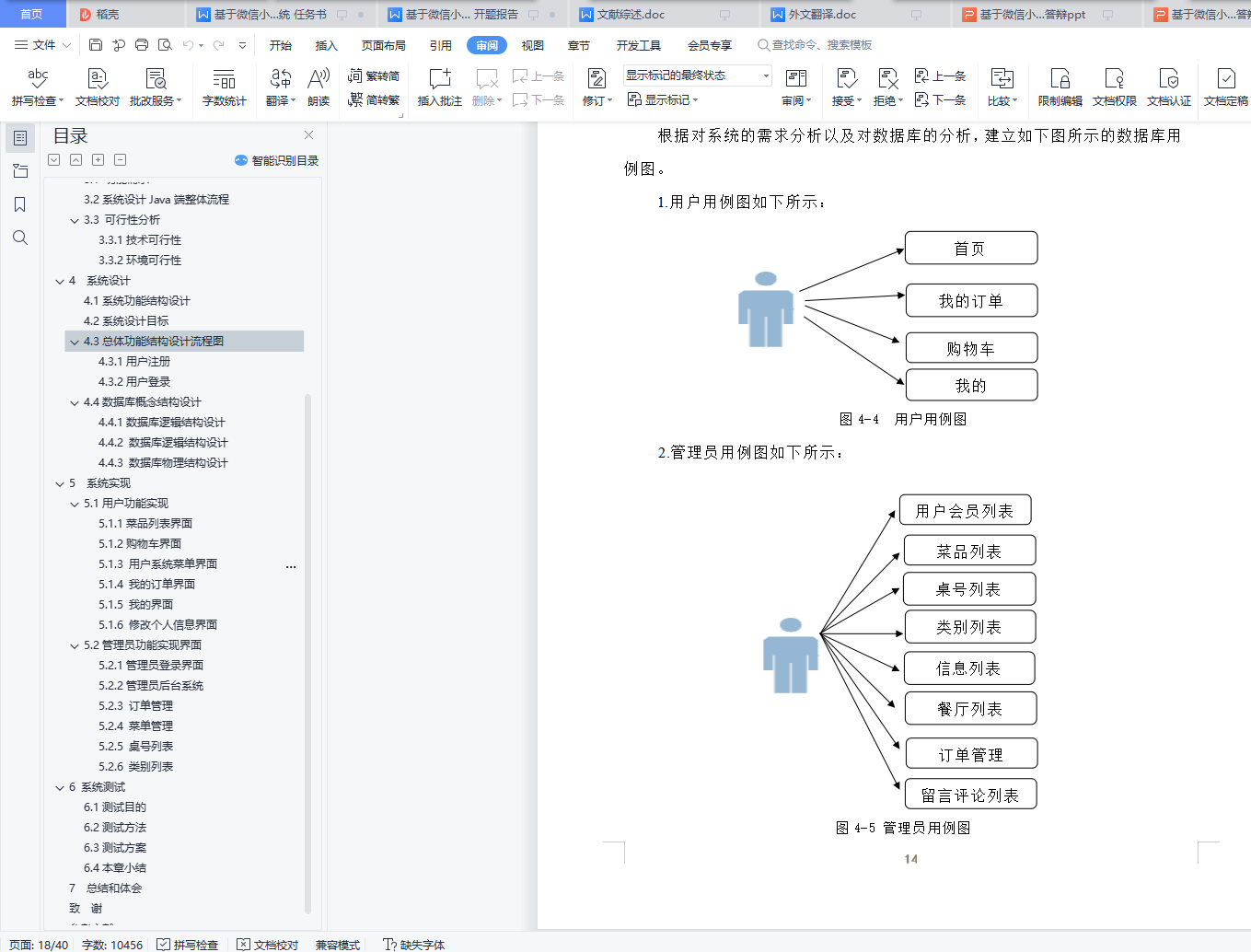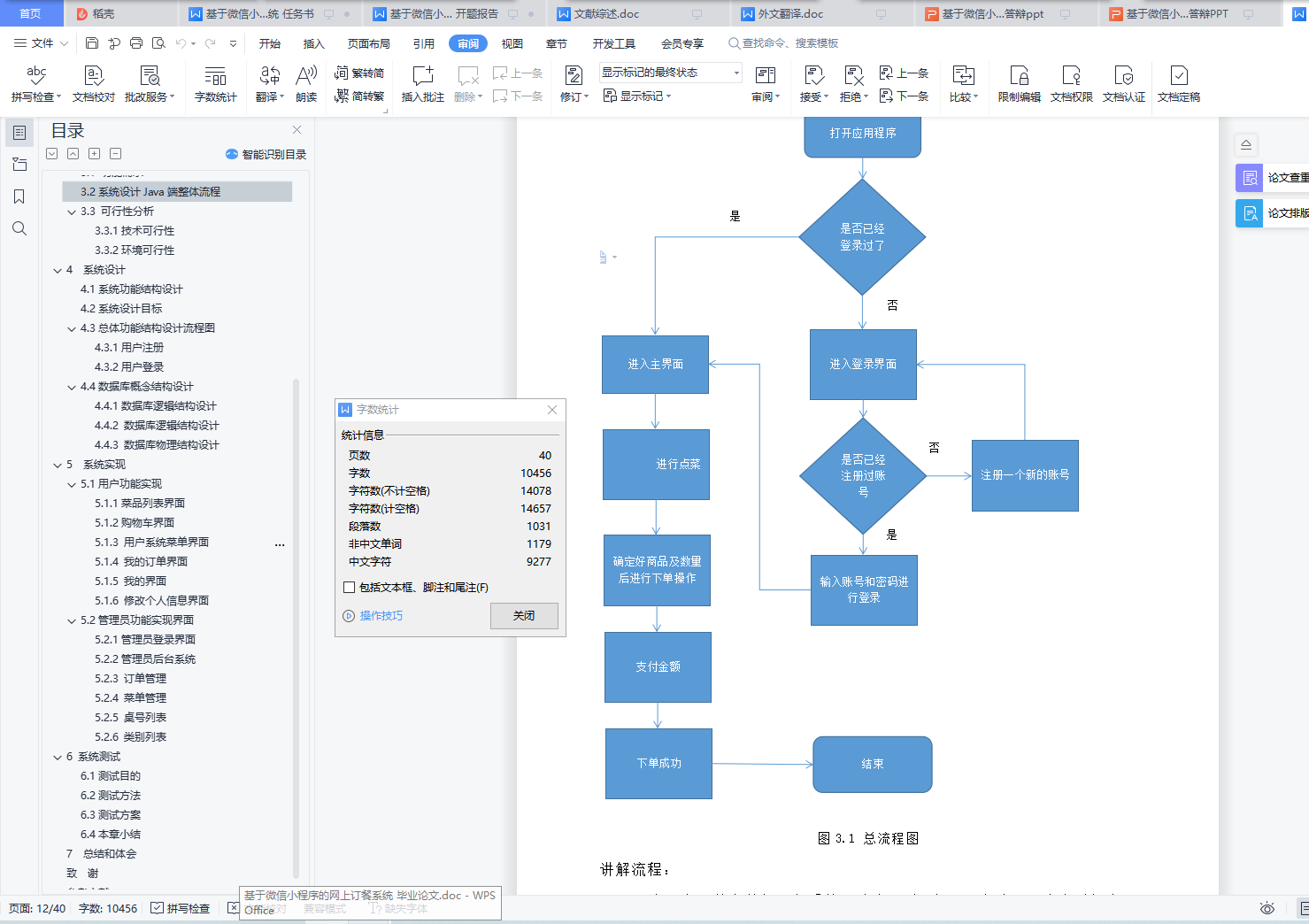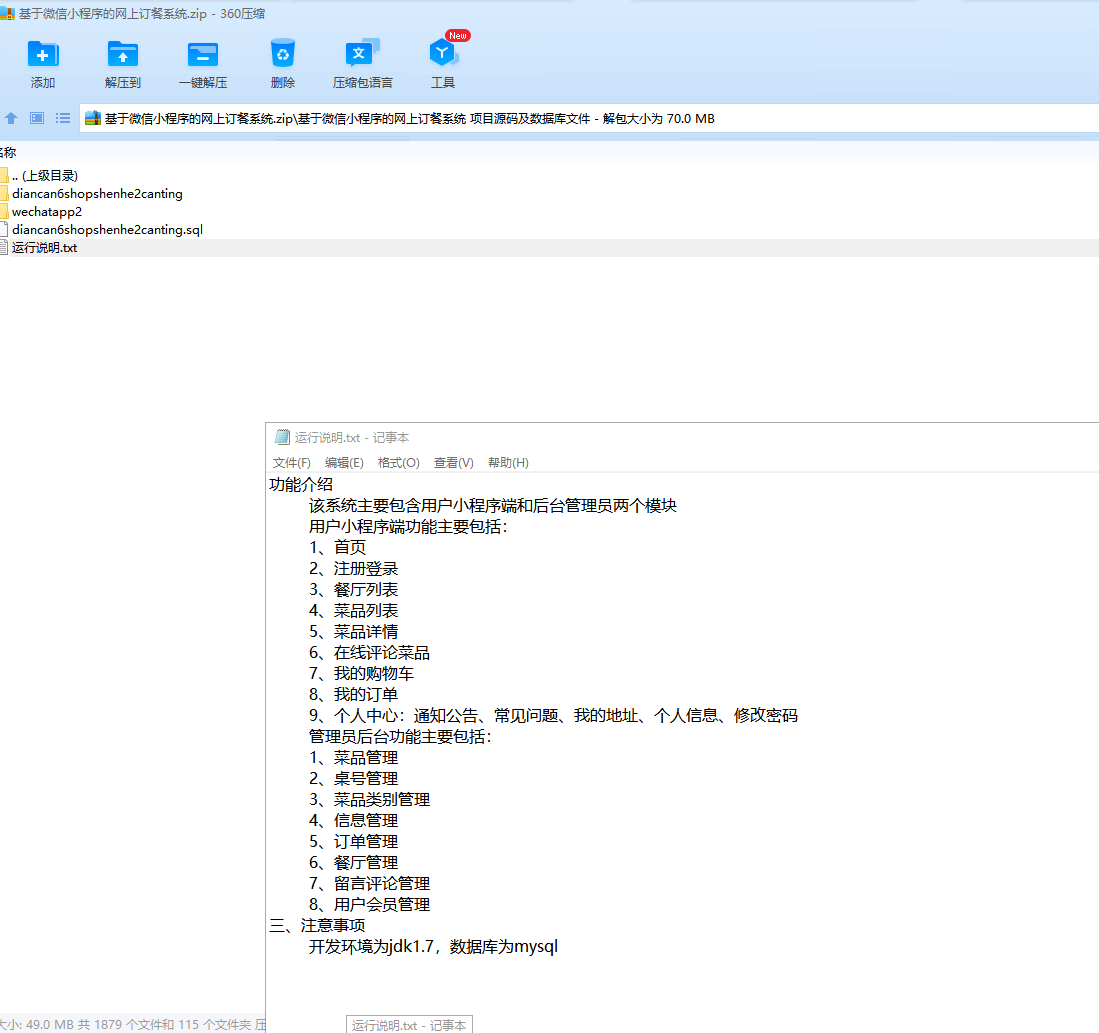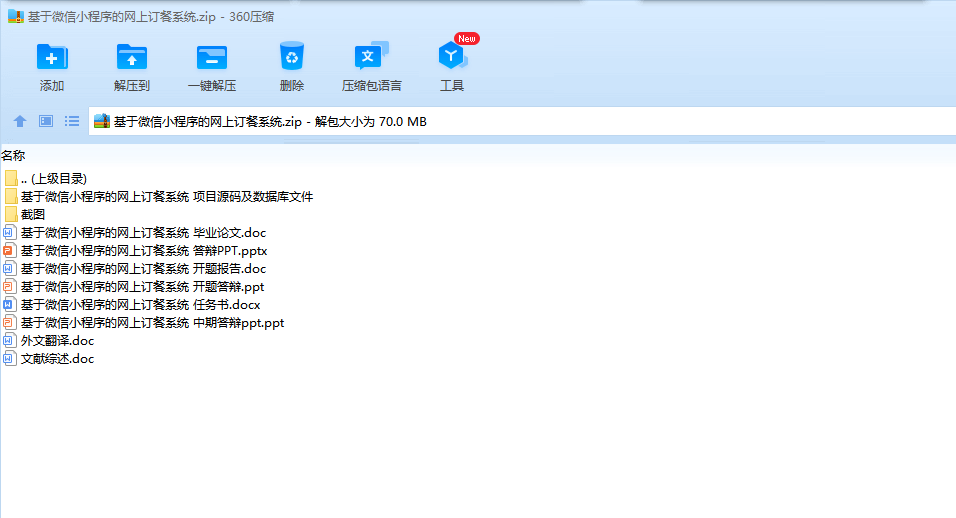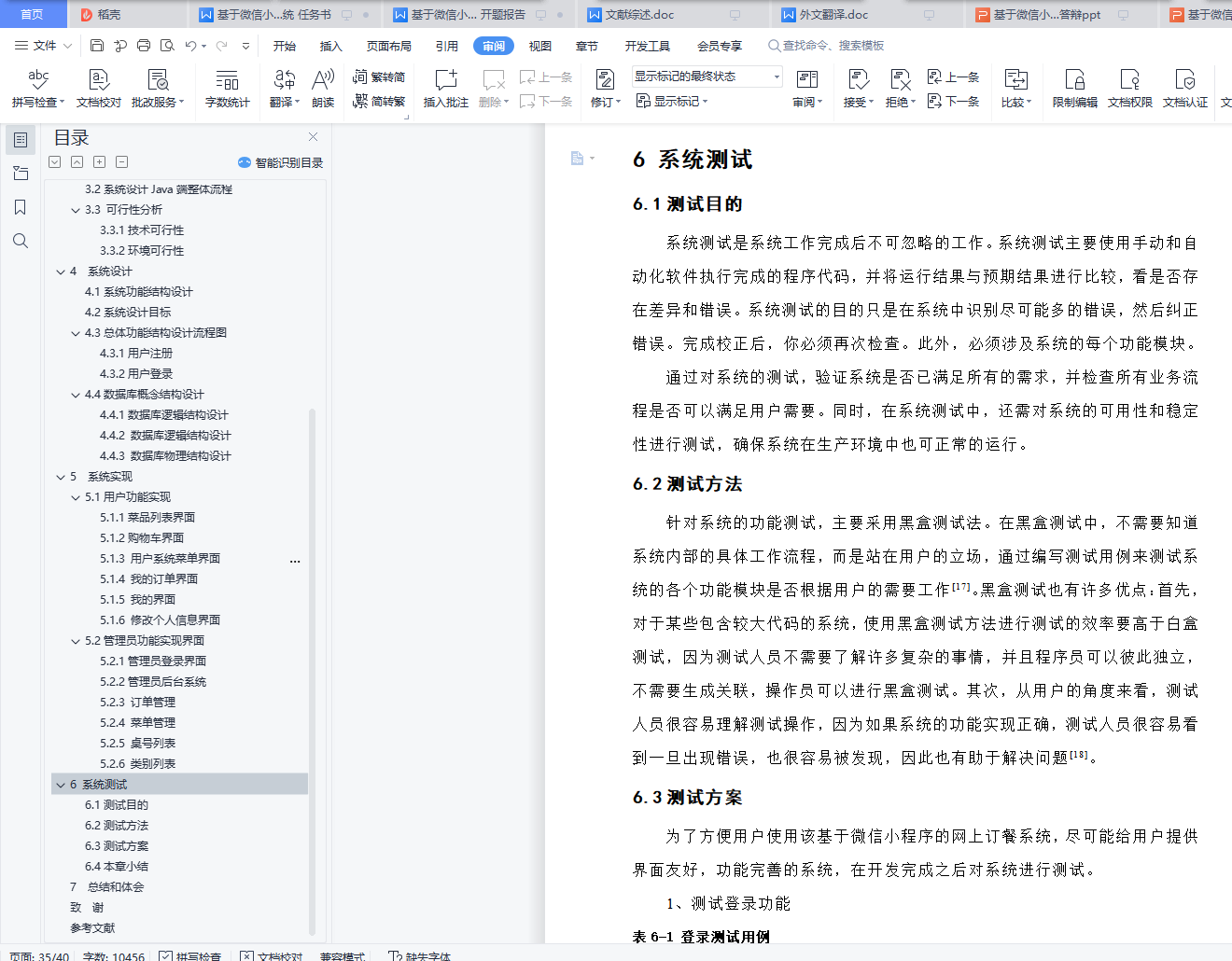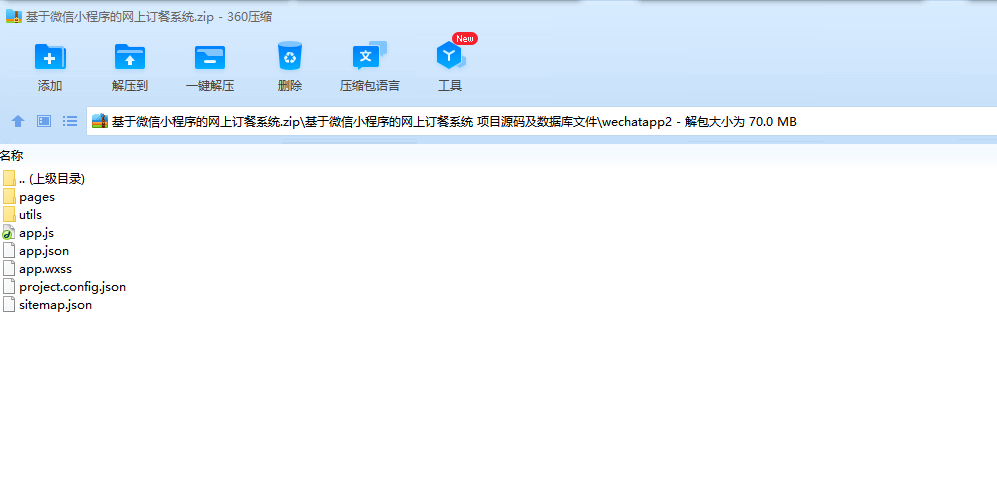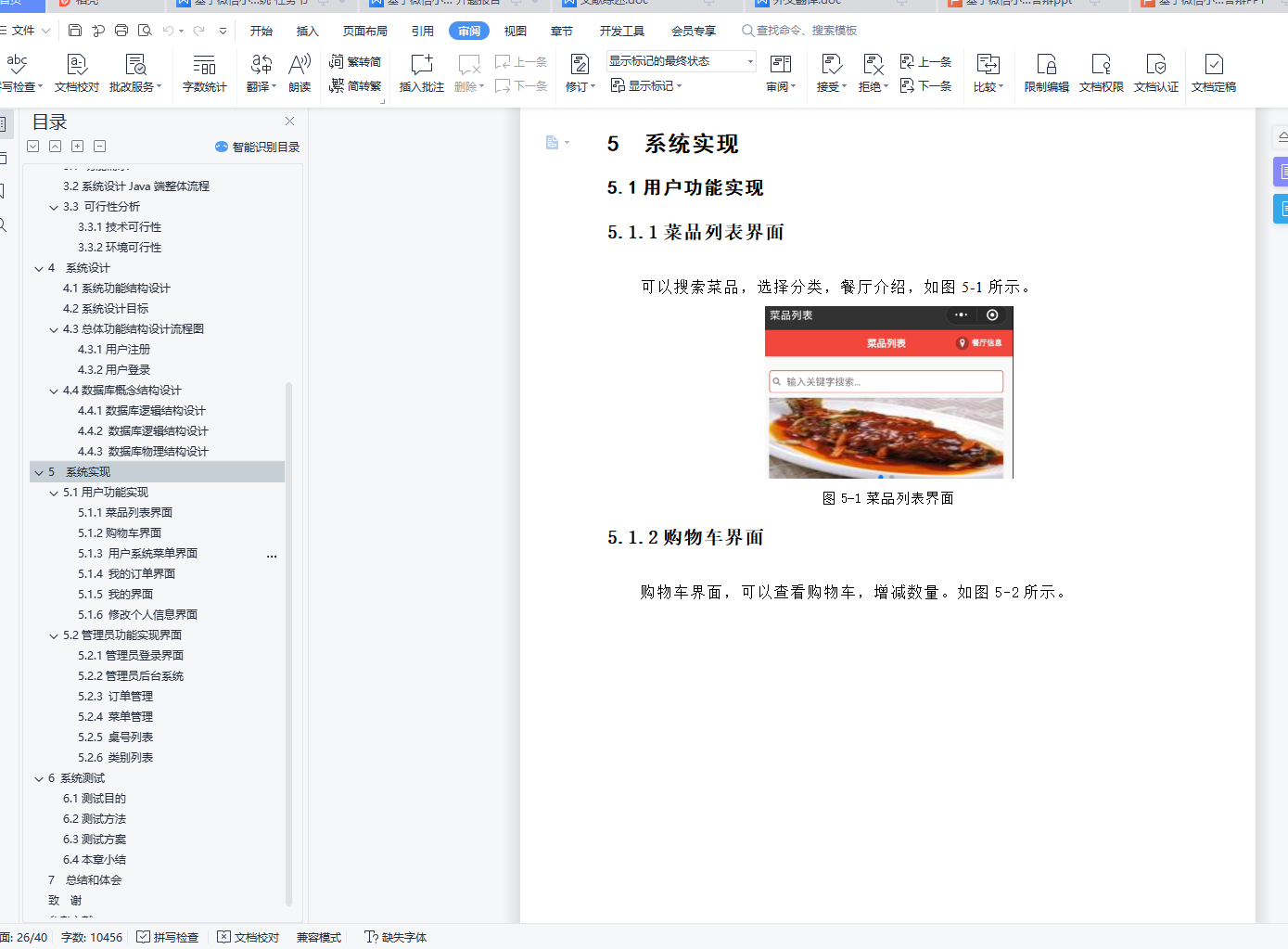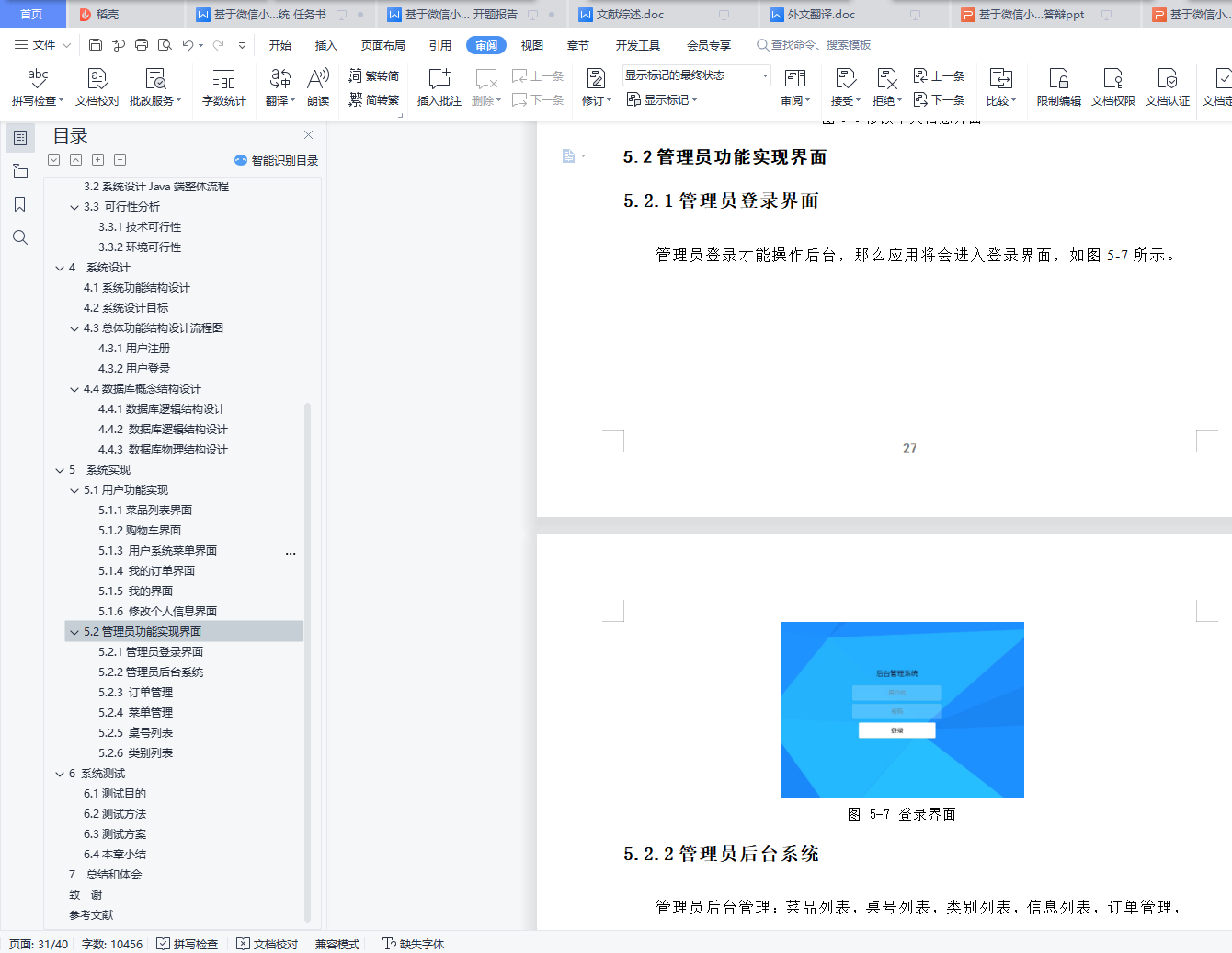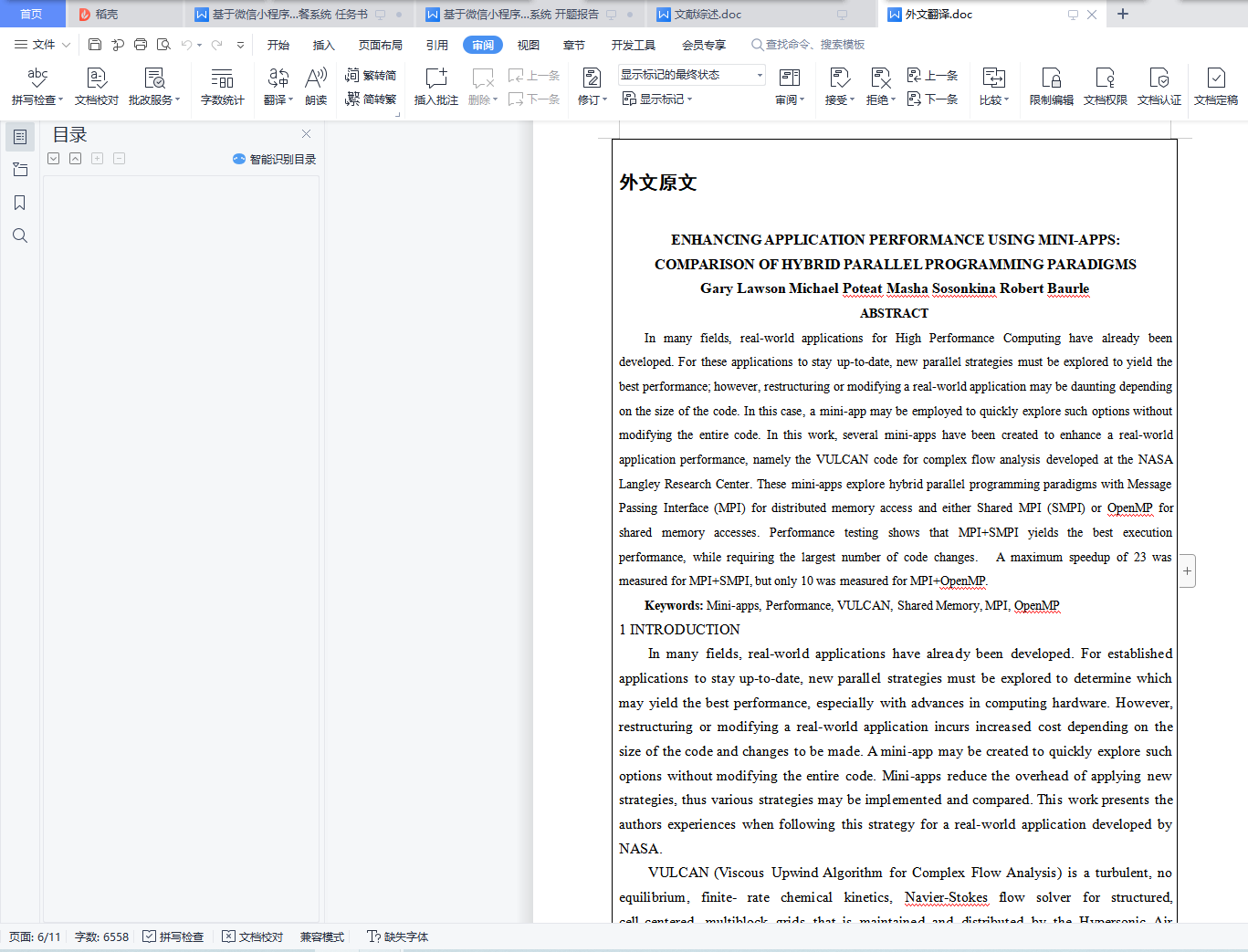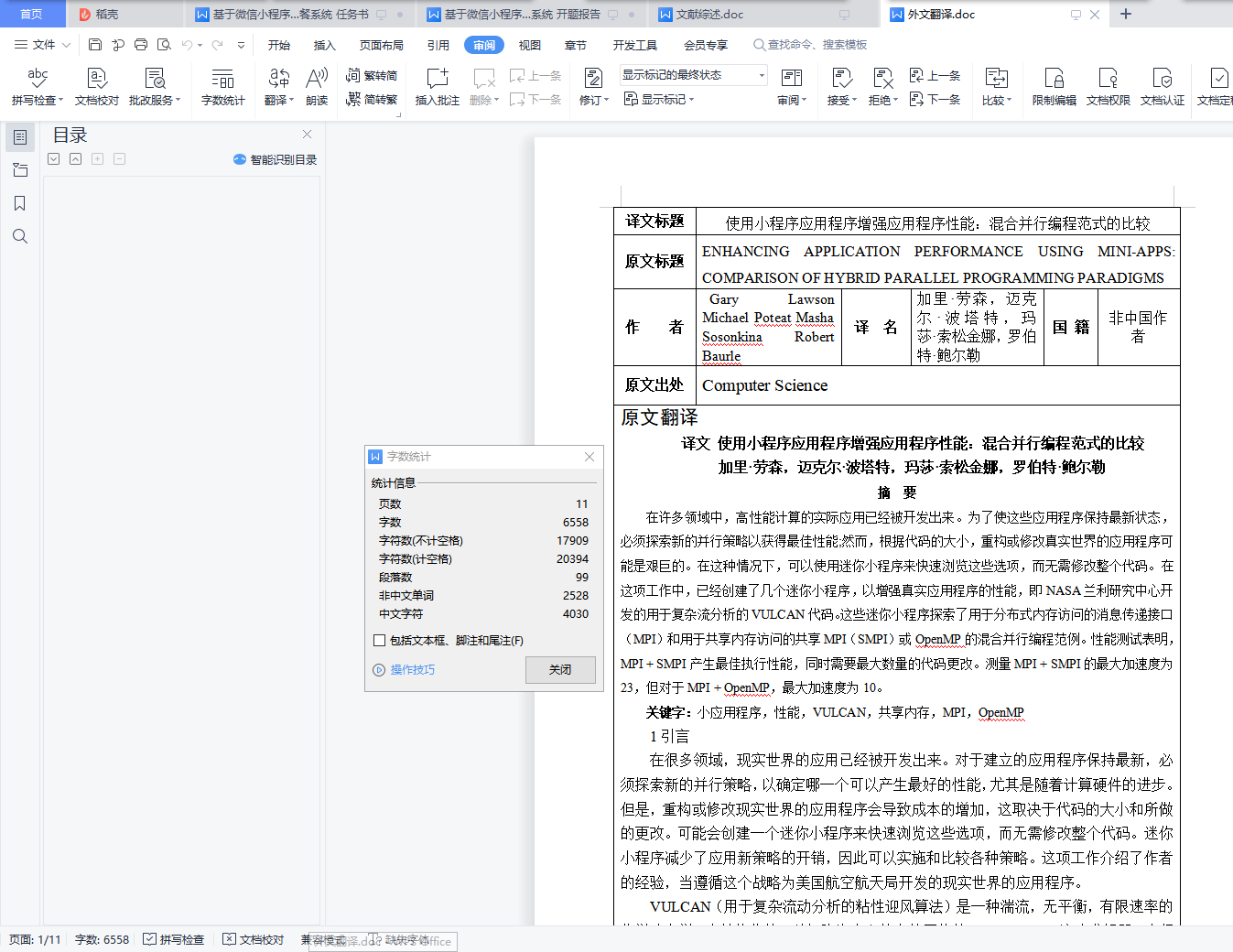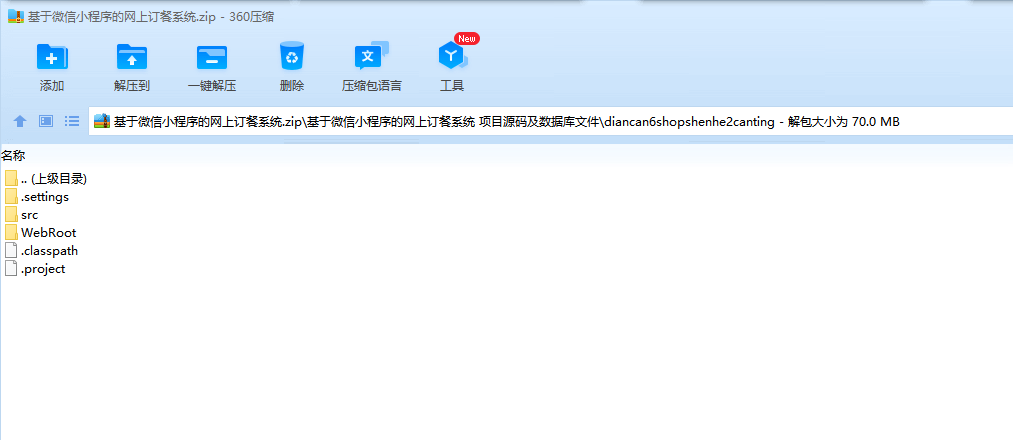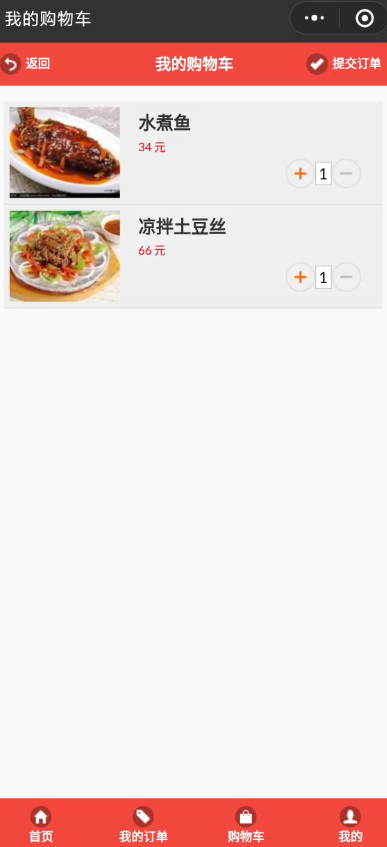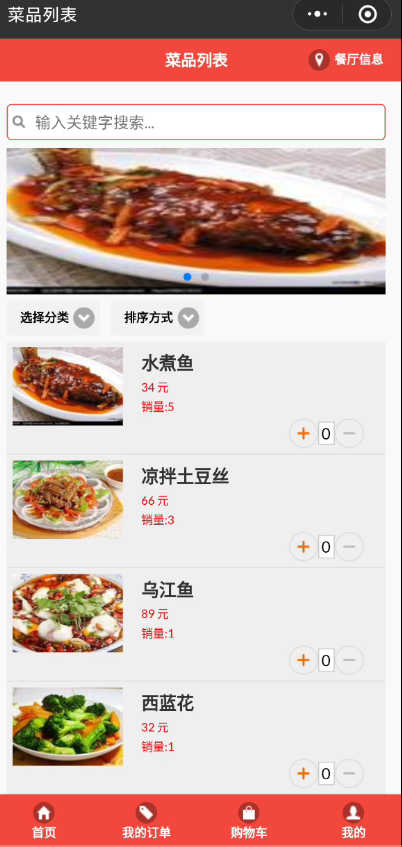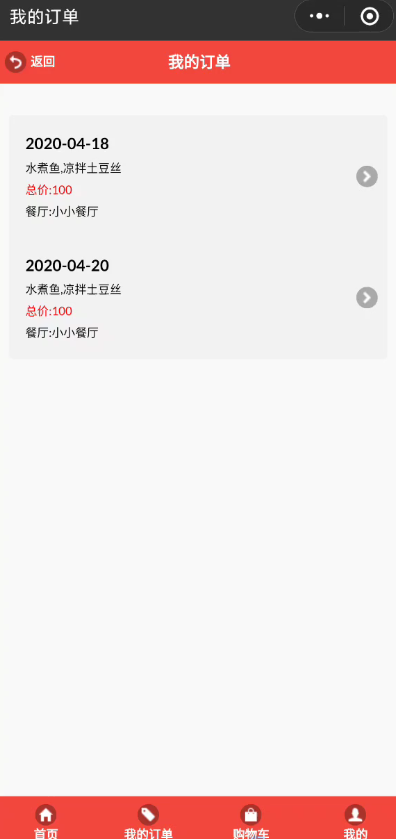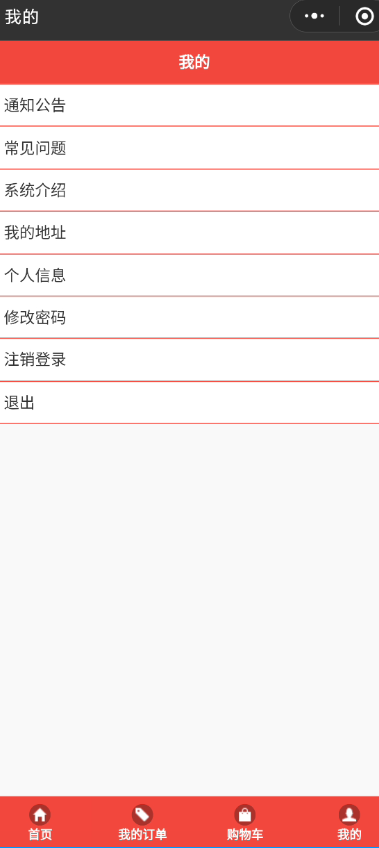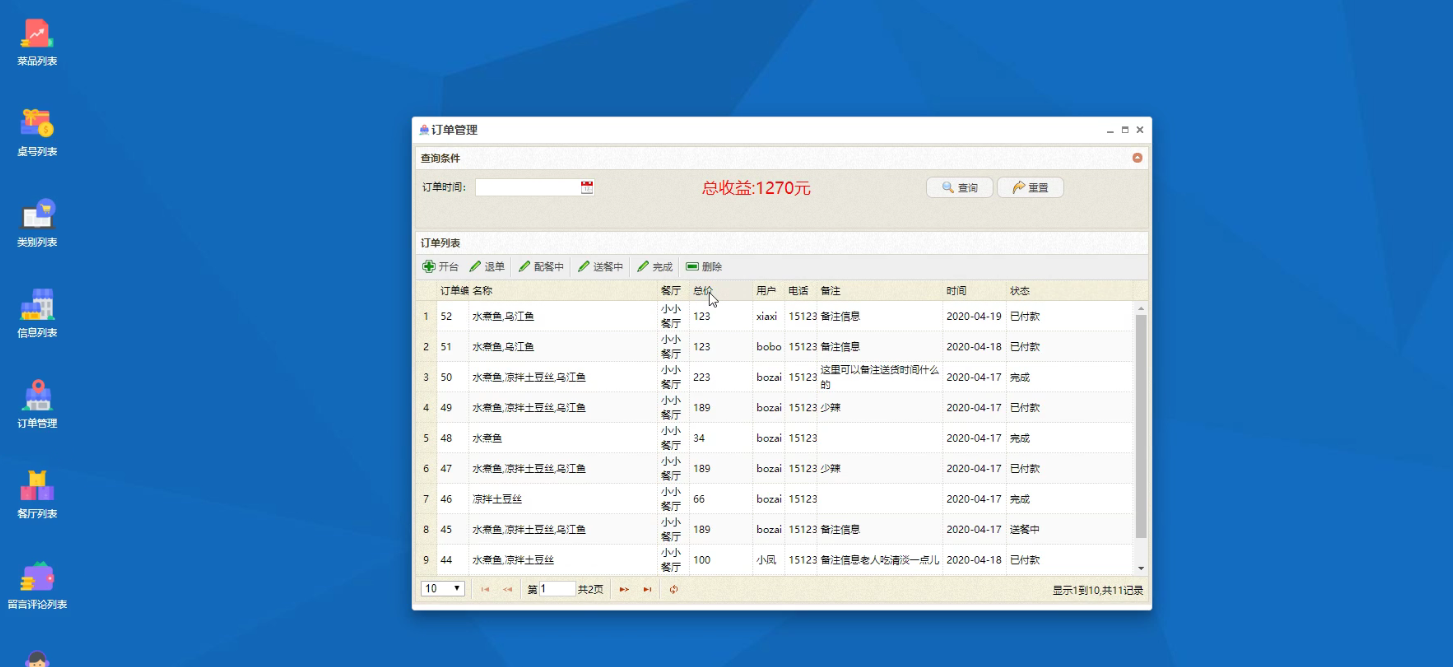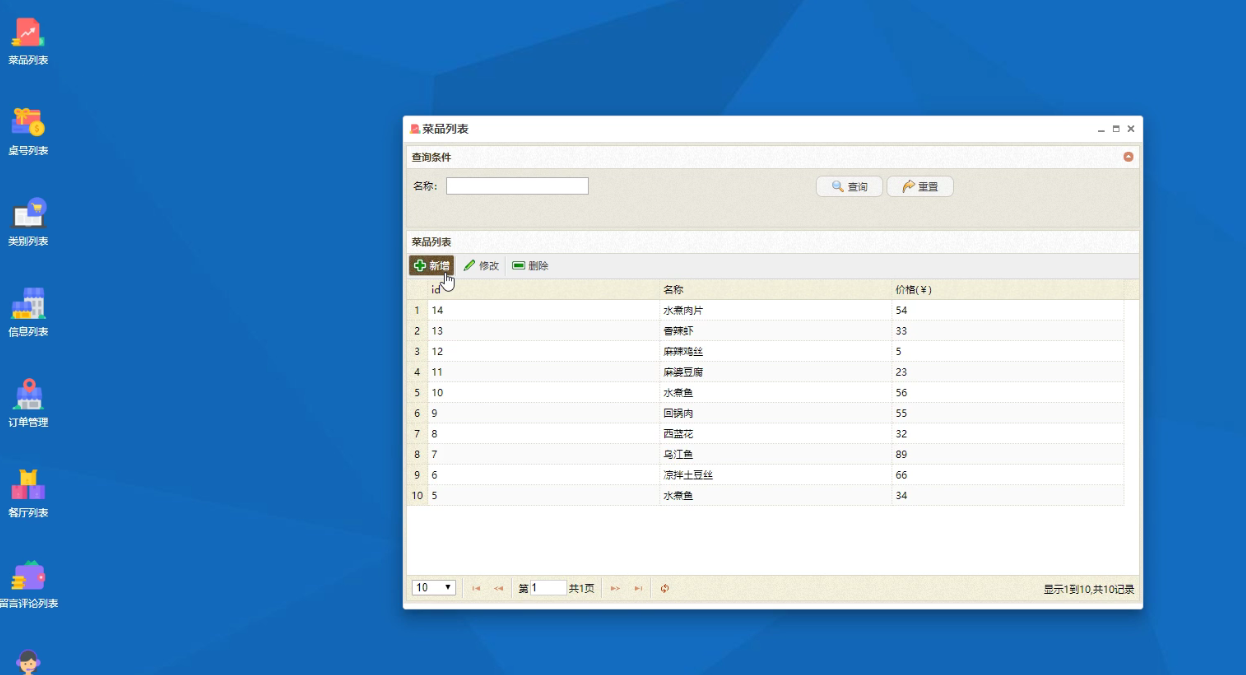摘要
随着微信小程序的飞速发展,很多系统随之兴起,微信已经是我们生活中的一部分,可不单单是人们用于沟通聊天的工具。还有很多公告平台、小程序也随之发展。大部分公众平台都只起到了一个信息消息的推送或者浏览的作用,而小程序的建立可以处理一些日常工作事务。本论文依据软件工程开发和面向对象编程思想,严格按照其步骤进行科学的开发。本文主要研究了基于微信小程序的网上订餐系统,用户可以注册属于自己的账号,然后登录账号,然后点菜,下单。
基于微信小程序的网上订餐系统使用的后台开发语言是JAVA。并且采用MySQL数据库进行数据的存储,数据表具有可视化的操作。同时,通过使用开发工具的办法测试、调试代码,以不断完善基本功能,最终实现该基于微信小程序的网上订餐系统。
关键词: 网上订餐系统;微信小程序;
Abstract
With the rapid development of wechat applets, many systems have sprung up. Wechat has become a part of our life, not just a tool for people to communicate and chat. There are also a lot of announcement platforms and applets. Most of the public platforms only play a role of pushing or browsing information, and the establishment of small programs can handle some daily work. According to the idea of software engineering development and object-oriented programming, this paper develops scientifically in strict accordance with its steps. This paper mainly studies the restaurant ordering software based on wechat applet. Users can register their own account, then log in the account, then order and place an order.
The background development language of restaurant ordering software based on wechat applet is Java. And MySQL database is used for data storage, and the data table has visual operation. At the same time, through the use of development tools to test and debug the code, in order to continuously improve the basic functions, and finally realize the restaurant ordering software based on wechat applet.
Keywords: Restaurant ordering software; wechat applet; MySQL
目 录
摘要
Abstract
1 前言
1.1 选题背景
1.2 研究的目的和意义
2 相关技术简介
2.1 系统的实现架构
2.2 系统使用的技术
2.2.1 Eclipse
2.2.2 Java
2.2.3 MySQL简介
2.2.4 微信小程序简介
2.3 系统使用的开发环境
3 系统需求分析
3.1 功能需求
3.2系统设计Java端整体流程
3.3 可行性分析
3.3.1技术可行性
3.3.2环境可行性
4 系统设计
4.1系统功能结构设计
4.2系统设计目标
4.3总体功能结构设计流程图
4.3.1用户注册
4.3.2用户登录
4.4数据库概念结构设计
4.4.1数据库逻辑结构设计
4.4.2 数据库逻辑结构设计
4.4.3 数据库物理结构设计
5 系统实现
5.1用户功能实现
5.1.1菜品列表界面
5.1.2购物车界面
5.1.3 用户系统菜单界面
5.1.4 我的订单界面
5.1.5 我的界面
5.1.6 修改个人信息界面
5.2管理员功能实现界面
5.2.1管理员登录界面
5.2.2管理员后台系统
5.2.3 订单管理
5.2.4 菜单管理
5.2.5 桌号列表
5.2.6 类别列表
6 系统测试
6.1测试目的
6.2测试方法
6.3测试方案
6.4本章小结
7 总结和体会
致 谢
参考文献

